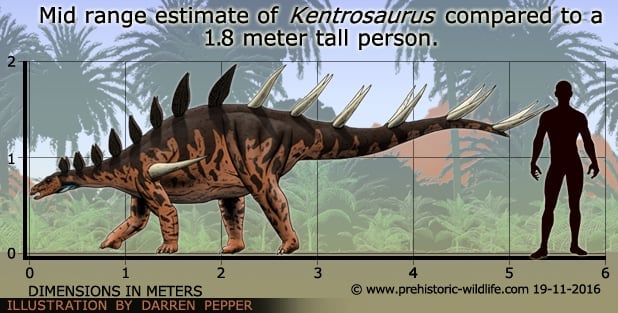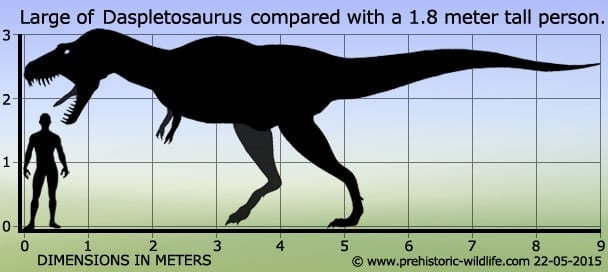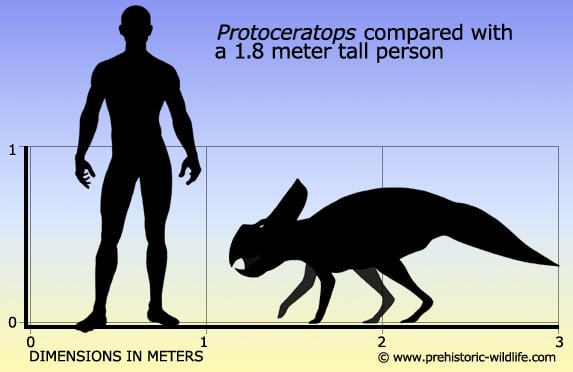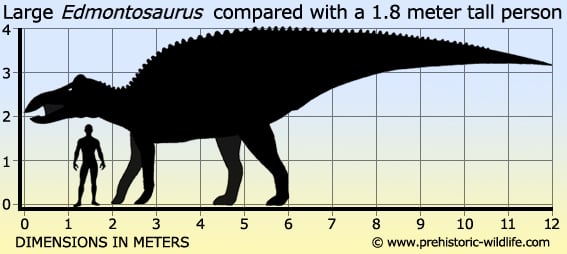Tix Mascot
Tech guru
Italy is my second homeland
Posts: 11,071  Mini-Profile Background: {"image":"http://4.bp.blogspot.com/-X5mhw13BJ7Y/TwKeZ3uM7YI/AAAAAAAABPw/D82go4Ny_8E/s1600/italy-background-8-787281.jpg","color":""}
Mini-Profile Text Color: 0ef8f1
Mini-Profile Name Color: f40d39
Year of Birth: 1961
Nationality: Norwegian
Mini-Profile Background: {"image":"http://4.bp.blogspot.com/-X5mhw13BJ7Y/TwKeZ3uM7YI/AAAAAAAABPw/D82go4Ny_8E/s1600/italy-background-8-787281.jpg","color":""}
Mini-Profile Text Color: 0ef8f1
Mini-Profile Name Color: f40d39
Year of Birth: 1961
Nationality: Norwegian
|
Post by Tix Mascot on Jun 2, 2021 19:31:17 GMT
Is this the type that some crypto-zoologists think may be behind the Loch Ness monster reports? |
|
|
|
Post by Joey12 on Jun 2, 2021 20:11:37 GMT
Those look like pets.
|
|
|
|
Post by Talira Greycrest on Jun 3, 2021 1:52:36 GMT
Is this the type that some crypto-zoologists think may be behind the Loch Ness monster reports? In the early 1930s, it was suggested that Nessie bore a striking resemblance to a Plesiosaur. However, the loch is only around 10,000 years old and if creatures similar to plesiosaurs lived in it they would be seen frequently, since they would have to surface several times a day to breathe. Also, the weight of the neck and the limited movement between the vertebrae would have made it impossible for Elasmosaurus to hold anything more than its head above the water. |
|
|
|
Post by Talira Greycrest on Jun 3, 2021 7:53:19 GMT
Here's a very spiky dino: Name: KentrosaurusPronunciation: Ken-tro-saw-rusMeaning of name: "Spiked lizard"Species: K. aethiopicusSize: Between 4.5 and 5.5 metres long, 2 metres high and weighing 1 metric tonne.Family: Stegosauridae.Diet: Herbivore. Fed on low-growing vegetation.First fossils found: Known from at least 50 individuals, the first of which were discovered by the German Tendaguru Expedition in the Tendaguru Formation of Tanzania, East Africa in 1909. Named by German palaeontologist, Edwin Hennig, in 1915, soon after which there was a naming controversy, as the name is very similar to the ceratopisian Centrosaurus.Lived: 152.1 million years ago during the Kimmeridgian stage of the Late Jurassic in what is now Tanzania, East Africa.
 |
|
Tix Mascot
Tech guru
Italy is my second homeland
Posts: 11,071  Mini-Profile Background: {"image":"http://4.bp.blogspot.com/-X5mhw13BJ7Y/TwKeZ3uM7YI/AAAAAAAABPw/D82go4Ny_8E/s1600/italy-background-8-787281.jpg","color":""}
Mini-Profile Text Color: 0ef8f1
Mini-Profile Name Color: f40d39
Year of Birth: 1961
Nationality: Norwegian
Mini-Profile Background: {"image":"http://4.bp.blogspot.com/-X5mhw13BJ7Y/TwKeZ3uM7YI/AAAAAAAABPw/D82go4Ny_8E/s1600/italy-background-8-787281.jpg","color":""}
Mini-Profile Text Color: 0ef8f1
Mini-Profile Name Color: f40d39
Year of Birth: 1961
Nationality: Norwegian
|
Post by Tix Mascot on Jun 3, 2021 16:11:28 GMT
A swing of its tail must have been pretty dangerous!  |
|
|
|
Post by Joey12 on Jun 4, 2021 0:35:41 GMT
Wow I sure agree with that Tix Mascot, might just eat grasses etc but that tail could kill you. |
|
|
|
Post by Talira Greycrest on Jun 4, 2021 1:38:10 GMT
The tail was very flexible and those spikes could cause some serious damage. It's even been suggested that, like modern porcupines, Kentrosaurus charged backwards to run through attackers with its spikes.
|
|
|
|
Post by Joey12 on Jun 4, 2021 1:42:17 GMT
Well they look like knife blades so the snart thing to do. Plus being a Herbivore it could make a chopped salad.  |
|
|
|
Post by Talira Greycrest on Jun 4, 2021 6:14:05 GMT
This dino is one of T-Rex's closest relatives: Name: DaspletosaurusPronunciation: Das-plee-toe-sore-us.Meaning of name: "Frightful lizard".Species: D. torosus, D. horneri, possible there may be a third species.Size: Between 8 and 9 metres long, 3 metres tall and weighing between 2 and 4 metric tonnes.Family: Tyrannosauridae.Diet: Carnivore.First fossils found: Known from six well-preserved specimens, the first of which was discovered by American-Canadian palaeontologist, Charles Mortram Sternberg, in the Oldman Formation of southern Alberta, Canada, in 1921. D. torosus named by American-Canadian palaeontologist, Dale Alan Russell, in 1970. D. horneri named by Thomas Carr in 2017. Was originally thought to be a species of Gorgosaurus.Lived: 77 to 74 million years ago during the Campanian stage of the Late Cretaceous in what is now western Canada and the northwestern United States.
 |
|
|
|
Post by Joey12 on Jun 4, 2021 8:43:07 GMT
That's pretty cool. Makes me wonder with all the long tails are they using them for balance or a weapon?
|
|
|
|
Post by Talira Greycrest on Jun 4, 2021 10:21:38 GMT
The tail was used mostly for balance, but many dinos also used their tails as weapons.
|
|
|
|
Post by gator on Jun 4, 2021 13:00:16 GMT
Wow a new club!
|
|
|
|
Post by Talira Greycrest on Jun 4, 2021 13:25:07 GMT
This dino was an early Ceratopsian: Name: ProtoceratopsPronunciation: Pro-toe-seh-rah-topsMeaning of name: "First horned face".Species: P. andrewsi, P. hellenikorhinusSize: 1.8 metres long, 0.7 metres high and weighing around 83kgs.Family: Protoceratopsidae.Diet: Herbivore. Fed on low-growing vegetation.First fossils found: Known from several individuals, the first of which was discovered by photographer, James Blaine Shackelford, during an American expedition to Mongolia's Gobi Desert in 1922. P. andrewsi named by American palaeontologists, William King Gregory and Walter Willis Granger, in 1923. P. hellenikorhinus named in 2001. A remarkable fossil discovered in 1971 shows a Protoceratops locked in battle with a Velociraptor. It's believed they were either buried by a collapsing sand dune or surprised by a sand storm. Unlike later Ceratopsians, Protoceratops didn't have horns.Lived: 75 to 71 million years ago during the Campanian and Maastrichtian stages of the Late Cretaceous in what is now northern China and southern Mongolia. |
|
|
|
Post by Talira Greycrest on Jun 5, 2021 4:27:46 GMT
One of the largest Hadrosaurs: Name: EdmontosaurusPronunciation: Ed-mon-toe-sore-usMeaning of name: "Edmonton lizard", named after the capital city of Alberta, Canada.Species: E. regalis, E. annectensSize: Between 12 and 15 metres long, 3 metres tall (up to 6 metres tall when standing upright) and weighing between 4 and 9 metric tonnes.Family: Saurolophinae (a sub-family of Hadrosauridae).Diet: Herbivore. Fed on both high and low-growing vegetation.First fossils found: Known from several specimens. First discovered by American palaeontologist, John Bell Hatcher, in the Lance Formation of eastern Wyoming in 1891. Named by Canadian palaeontologist, Lawrence Lambe, in 1917. Over the years, Edmontosaurus has been known by many other names including Agathaumas, Anatosaurus, Anatotitan, Claosaurus, Hadrosaurus, Thespesius and Trachodon.Lived: 73 to 66 million years ago during the Campanian and Maastrichtian stages of the Late Cretaceous in what is now western Canada and the western United States. |
|
|
|
Post by Joey12 on Jun 5, 2021 6:26:36 GMT
That tail looks like a big club on Edmontosaurus plus it almost half it's body length.
|
|